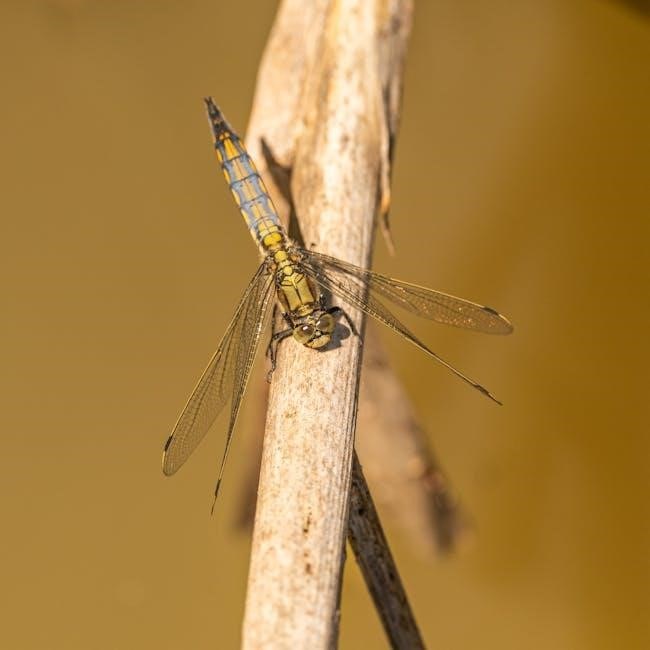Welcome to the world of Wingspan, a strategic board game where players create habitats for birds, optimizing resources and planning carefully to achieve victory․
1․1 What is Wingspan?
Wingspan is a strategic board game designed for 1-5 players, centered around bird conservation and habitat-building․ Players compete to create the most efficient ecosystem, collecting resources like food, eggs, and feathers․ The game combines engine-building mechanics with a thematic focus on avian biology․ By placing birds in different habitats and utilizing their unique abilities, players aim to maximize their score․ Wingspan is celebrated for its blend of strategic depth and educational value, making it both challenging and engaging for nature enthusiasts and gamers alike․
1․2 Overview of the Game
Wingspan is a competitive board game where players build habitats and manage resources to attract and support bird populations․ Designed for 1-5 players, the game is divided into rounds, with each round representing a season․ Players earn points by placing birds, collecting food, laying eggs, and gathering feathers․ The game board features three habitats—forest, grassland, and wetland—each offering unique opportunities․ Resources are managed carefully, and strategic planning is essential to maximize points․ The game concludes after four rounds, with the highest scorer declared the winner․
1․3 Importance of Understanding the Rules

Mastery of Wingspan’s rules is essential for strategic gameplay and fair competition․ Understanding bird abilities, resource management, and scoring mechanics ensures players can make informed decisions․ Misinterpreting rules can lead to mistakes, affecting gameplay and outcomes․ Familiarity with setup, turns, and endgame conditions helps players optimize their strategies․ Clear knowledge of rules also enhances enjoyment, as players can focus on the game’s depth and complexity without confusion․ Taking time to learn and apply the rules correctly is key to maximizing your Wingspan experience and achieving success․
Components of the Game
Wingspan includes a game board, bird cards, food tokens, egg tokens, and feathers, each serving unique roles in gameplay and strategy development․
2․1 The Game Board
The game board is the central playing area, featuring habitats like wetlands, forests, grasslands, deserts, and mountains․ Each habitat offers unique opportunities for placing birds․ The board includes a scoring track, round tracker, and bonus sections; Players place birds, manage resources, and track progress here․ The board’s design encourages strategic bird placement and resource management, making it essential for gameplay․ Its layout ensures clarity and organization, allowing players to focus on optimizing their strategies effectively throughout the game․
2․2 Bird Cards
Bird cards are central to Wingspan, representing over 200 unique bird species․ Each card details the bird’s food cost, habitat preference, and special abilities․ Players collect and place these cards strategically․ The cards feature beautiful illustrations and ecological information, enhancing gameplay․ Birds vary in size, diet, and abilities, offering diverse strategies․ Understanding bird cards is crucial for effective gameplay, as their abilities can significantly impact resource management and scoring opportunities․ They are the heart of the game, driving player decisions and interactions․
2;3 Food Tokens
Food tokens represent the resources birds need to survive and thrive․ They come in four types: seeds, insects, fish, and rodents․ Players collect these tokens to pay the food cost when placing bird cards․ Each bird card specifies the type and quantity of food required․ Managing food tokens efficiently is crucial, as they are limited and essential for gameplay․ Strategic collection and use of food tokens directly impact a player’s ability to place birds and earn points․ Proper resource management is key to success in Wingspan․
2․4 Egg Tokens
Egg tokens represent the eggs laid by birds in their nests․ These tokens are placed on bird cards during gameplay and contribute to scoring․ Each egg token is worth one point at the end of the game․ Players can gain egg tokens by hatching eggs from certain bird abilities or through specific actions during rounds․ Eggs are a vital part of the game, as they not only provide points but also unlock special abilities on bird cards․ Managing eggs effectively enhances overall gameplay and scoring potential․
2․5 Feathers
Feathers are a key resource in Wingspan, serving as both a currency and a scoring mechanism․ Players earn feathers by playing bird cards and collecting food tokens․ Feathers can be used to gain additional food resources, aiding in the placement of more birds․ At the end of the game, feathers contribute to the final score, with each feather worth one point․ Effective feather management is crucial for maximizing scoring potential and achieving victory in the game․

Setup and Preparation
Setting up Wingspan involves organizing components, preparing the board, and ensuring all players have necessary resources․ A well-prepared setup ensures smooth gameplay from the start․
3․1 Unpacking the Game
When you first open Wingspan, you’ll find the game board, 170 bird cards, 26 bonus cards, 100 food tokens, 75 egg tokens, 5 feather tokens, and 1 rulebook․ The bird cards feature unique species with specific abilities and point values․ Food tokens include insects, seeds, and fish, while egg tokens represent nesting progress․ Feathers are used for scoring bonuses․ Ensure all components are accounted for before starting․ Some items may need to be punched out from their sheets․
3․2 Arranging the Board
Place the main game board in the center of the playing area․ Ensure the bird feeder track is visible to all players․ Shuffle the bird cards and place them face down on their designated spots․ Set up the bonus cards and habitats according to the board’s layout; Organize food tokens, egg tokens, and feathers within easy reach․ Each player should have their own player board and starting resources․ Make sure the setup is clear and accessible for everyone involved․
3․4 Distributing Initial Resources
Each player begins by receiving a set number of food tokens, typically five, and a selection of feathers․ Place these resources on each player’s board․ Ensure the food tokens are easily accessible for future turns․ Additionally, distribute the starting bird cards to each player, allowing them to choose one to place on their board․ Finally, confirm that all resources, including eggs and feathers, are within reach of every player to facilitate smooth gameplay throughout the session․

Gameplay Mechanics
Wingspan’s gameplay revolves around strategic bird placement, resource management, and efficient planning․ Players balance food, eggs, and feathers to maximize points across multiple rounds, ensuring optimal play․
4․1 Bird Placement
Bird placement is a core mechanic in Wingspan, where players strategically position bird cards on the board․ Each bird card is placed in a habitat, costing feathers․ Birds have unique abilities that can be activated once per round, offering benefits like extra food or points․ Placement requires careful planning, as birds must be placed in habitats they prefer․ Timing and resource management are crucial, as placing a bird later in the game can yield higher rewards․ Optimize bird placement to maximize points and resource efficiency․
4․2 Food Resource Management
Food resource management is vital in Wingspan, as players collect food tokens to play bird cards․ Each bird requires specific food types and quantities․ Players gather food through dice rolls or bird abilities․ Efficient food management ensures you can play birds when needed; Poor management can limit your options, while effective planning allows strategic bird placement․ Food tokens are a renewable resource, but their availability varies by round․ Balancing food collection with bird placement is key to maintaining momentum and achieving long-term success in the game․
4․3 Egg Hatching and Nesting
Egg hatching and nesting are key mechanics in Wingspan, where players place eggs on bird cards to score points․ Eggs are laid during the game and hatched by spending food tokens․ Each bird card specifies the number of eggs it can hold․ Hatched eggs remain on the card, contributing to endgame scoring․ Players earn points for hatched eggs, with bonuses for having multiple eggs in a habitat․ Strategic egg placement and timing are crucial for maximizing points and securing victory․
4․4 Feather Collection
Feathers are a unique resource in Wingspan, collected by players to earn bonuses and points․ Feathers can be obtained through specific bird abilities or by meeting habitat requirements․ Each feather token represents a bonus, which can be activated during the game to gain advantages․ Players can strategically collect and use feathers to enhance their scoring potential․ Feather bonuses vary, offering rewards like extra food, eggs, or points․ Maximizing feather collection and usage is a key strategy to outperform opponents and secure victory in the game․

Scoring and Winning
Scoring in Wingspan is based on bird cards, food tokens, eggs, and feathers․ The game ends after the fourth round, and the player with the highest score wins․
5․1 Points from Bird Cards
Each bird card in Wingspan has a specific point value, contributing directly to your score․ Points are awarded when placing a bird, with values ranging from 1 to 10․ Some birds also provide bonus points through special abilities or endgame contributions․ The base point value is added immediately upon placement, while bonuses may trigger during the game or at the end․ Maximizing these points requires strategic bird selection and placement to align with your overall game plan and available resources․
5․2 Points from Food Tokens
Food tokens contribute to your final score based on their type and quantity․ Each token has a specific point value, with higher-value tokens like worms and fish scoring more․ At the end of the game, sum the points from all unused food tokens in your storage․ Efficient food management during the game can significantly boost your score, as leftover tokens translate directly into points․ Balancing food collection and usage is key to maximizing this scoring opportunity․
5․3 Points from Eggs

Eggs are a key component of scoring in Wingspan․ Each egg placed on a bird card contributes 1 point at the end of the game․ The number of eggs on a bird card determines its scoring potential, with some birds rewarding additional points for multiple eggs․ Eggs are hatched from the birdfeeder and placed on nests during gameplay․ All eggs on the board at the end of the game count toward your final score․ Maximizing egg placement and leveraging bird abilities that interact with eggs can significantly enhance your points․
5․4 Points from Feathers
Feathers in Wingspan contribute to your score based on their colors, which correspond to specific habitats․ Each feather color aligns with a habitat on the board, and points are awarded at the end of the game․ The more feathers you have in a habitat, the higher your score․ Feathers are collected through bird placement, special abilities, and other in-game actions․ To maximize points, focus on gathering a diverse range of feathers across all habitats, as this will increase your endgame tally․
5․5 Endgame Scoring
Endgame scoring in Wingspan is the final tally of points, combining all accumulated points from bird cards, food tokens, eggs, and feathers․ Each bird card’s point value is added, along with points from unused food tokens and eggs․ Feathers also contribute based on their color and habitat alignment․ Additionally, players earn bonus points for having the most birds in each habitat․ The player with the highest total score wins, making strategic planning and resource management crucial throughout the game to maximize endgame points․

Special Rules and Bonuses
Special rules and bonuses in Wingspan enhance gameplay through unique bird abilities, habitat bonuses, and end-of-round rewards, offering strategic depth and exciting opportunities for players․
6․1 Special Bird Abilities
Each bird card in Wingspan features unique abilities that provide distinct advantages, such as drawing extra cards, gaining bonus food, or placing birds in specific habitats․ These abilities are triggered under certain conditions, adding depth to gameplay․ Players must strategically choose and activate these powers to maximize their score․ Understanding and leveraging these special abilities is key to outperforming opponents and achieving victory․ They offer creative ways to adapt to the game’s progression and enhance overall strategy․
6․2 Habitat Bonuses
Habitat bonuses are rewards earned by filling all bird slots in a specific habitat․ Each habitat (Forest, Grassland, Wetland, Desert) offers unique bonuses, such as extra points, food, or eggs․ These bonuses are revealed when the last bird is placed in a habitat, providing immediate benefits․ Players can strategically aim to complete habitats to gain these advantages, enhancing their overall score and resource management․ Habitat bonuses add a layer of tactical planning, encouraging players to balance bird placement across different environments․
6․3 End-of-Round Bonuses
End-of-round bonuses are rewards earned at the conclusion of each round, based on the round goals indicated on the scoring wheel․ These bonuses can include extra food, eggs, or feathers, and are awarded to all players who meet the specific round objective․ The bonuses are revealed progressively, with each round offering different challenges and rewards․ Players must adapt their strategies to maximize these bonuses, as they provide immediate benefits and can significantly impact the game’s outcome․ These bonuses add depth and variety to the gameplay experience․
Advanced Strategies
Mastering Wingspan requires optimizing bird placement, resource management, and strategic planning for endgame scoring to maximize points efficiently and outperform opponents․
7․1 Maximizing Food Efficiency
Maximizing food efficiency is crucial in Wingspan, as it allows players to place more birds and activate abilities․ Focus on understanding the food costs of bird cards and plan accordingly․ Prioritize birds that offer bonuses for specific food types and use end-of-round bonuses to gain extra resources․ Efficiently managing food tokens ensures you can execute your strategy without wasting opportunities․ Balancing food collection with bird placement is key to maintaining momentum and securing victory․
7․2 Optimizing Bird Placement
Optimizing bird placement is essential for maximizing points and resource efficiency․ Choose habitats that align with each bird’s abilities and food requirements․ Prioritize placing birds with high point values or special abilities early to leverage their benefits․ Consider the endgame scoring when selecting birds for each habitat․ Strategic placement ensures you maximize the effectiveness of each bird, contributing to a stronger overall strategy and higher scores․ Plan carefully to avoid suboptimal placements that could hinder your progress․
7․3 Managing Resources Effectively
Managing resources effectively is crucial for success in Wingspan․ Focus on collecting and spending food tokens, eggs, and feathers wisely to support your bird placements and strategies․ Balance short-term needs with long-term goals, such as saving feathers for endgame scoring․ Efficient resource management ensures you can execute your plans without running out of essential supplies․ Poor resource management can lead to missed opportunities, so always plan ahead and prioritize your spending to maximize your score․

Common Mistakes to Avoid
Common mistakes in Wingspan include mismanaging resources, ignoring bird abilities, and neglecting endgame scoring opportunities, which can significantly impact your overall strategy and final score․

8․1 Misunderstanding Bird Abilities
Misunderstanding bird abilities is a common mistake, as each bird card has unique powers that can greatly impact gameplay․ Ignoring or misapplying these abilities can lead to inefficient food use, missed scoring opportunities, and poor habitat placement․ Players often overlook the specific triggers or conditions required to activate certain abilities, which can result in suboptimal plays․ Taking the time to thoroughly read and understand each bird’s ability before placing it is crucial for maximizing its potential and avoiding strategic missteps during the game․
8․2 Poor Resource Management
Poor resource management is a frequent error, leading to inefficiency and missed opportunities․ Failing to plan food, eggs, and feather usage can result in wasted resources and unfulfilled bird card requirements․ Players often hoard food tokens unnecessarily or run out when needed most, disrupting their strategy․ Similarly, neglecting to use bird abilities to generate extra resources can hinder progress․ Effective resource management requires balancing immediate needs with long-term goals, ensuring resources are used wisely to maximize scoring potential throughout the game․
8․3 Ignoring Endgame Scoring
Ignoring endgame scoring is a common mistake that can significantly reduce a player’s final points․ Many players focus solely on mid-game strategies, neglecting to plan for the endgame․ This oversight can result in missed opportunities to score points from leftover food tokens, eggs, and feathers․ Additionally, failing to consider the bonus points from bird cards with endgame abilities can cost players dearly․ A well-rounded strategy should always account for the endgame, ensuring resources are managed effectively to maximize scoring potential in the final round․
Mastering Wingspan requires strategic planning and adaptability․ By understanding the rules and optimizing your gameplay, you’ll enhance your enjoyment and chances of success․ Happy birding!
9․1 Recap of Key Rules
Wingspan is a strategic game where players place birds, manage food, hatch eggs, and collect feathers․ Points come from bird cards, food tokens, eggs, feathers, and endgame scoring․ Special bird abilities, habitat bonuses, and end-of-round bonuses add depth․ Efficient resource management and strategic bird placement are crucial․ Understanding these core mechanics and optimizing your strategy will enhance your gameplay and improve your chances of winning․ Familiarize yourself with the rules to fully enjoy the game’s complexity and beauty․

9․2 Final Tips for Success
To excel in Wingspan, focus on understanding the game’s objectives and planning your strategy from the start․ Prioritize resource management, as food and eggs are critical for sustaining your birds․ Optimize bird placement to maximize habitat bonuses and special abilities․ Pay attention to endgame scoring to ensure you’re prepared for the final round․ Adapt to your opponents’ moves and balance short-term gains with long-term goals․ Practice makes perfect, so keep experimenting with different strategies to refine your gameplay․
